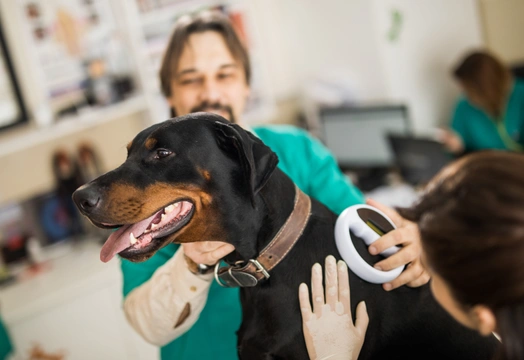
Microchipping - why is it important?
Most people are familiar with the idea of microchipping their pet, but there still seems to be confusion about what microchips actually are as well as the laws associated with them. In this article we will explore microchipping and why it is important for you and your pet.
What is a microchip?
A microchip is a permanent implant that is placed in the loose skin between your pet’s shoulders. It is about the size of a large grain of rice and most owners are unable to feel it (except in very thin-skinned or underweight animals). The microchip is a radio-frequency identification transponder that doesn’t contain any batteries and should therefore last for the lifetime of the animal. It contains a unique number that can be read by a scanner via low wave radio frequency.
Registering your microchip
When the microchip is implanted, it should be registered in the current owners’ details, which are then held on a database by the microchip company against that animal’s chip number. As puppies should be microchipped before 8 weeks of age, the chip is often registered with the breeder’s details initially. When you take over ownership of your new puppy you can update your details with the microchip company’s database. A reputable breeder should give you the details of the microchip and information on how to do this.
If there is an issue and you need to check which microchip database your pet is registered to then use the Check a Chip website. There are many different companies in the UK, so this can help to identify which one your pup is registered with.
Microchipping and the law
In the UK, it is the law for all dogs to be microchipped by a trained professional by 8 weeks of age. As mentioned before, this is usually done by the breeder as pups shouldn’t go to their new homes until 8 weeks of age or onwards.
It is then your responsibility to get the information on the database changed to your details. You must also make sure that any time you move house or change contact details, you inform the microchip company.
If your dog is found to be not microchipped or if that chip is unregistered then you could face a £500 fine and criminal prosecution, if you don’t rectify things within 21 days.
Your dog still needs to wear an identity tag by law in public, as well as have his microchip. The tag should have your name and address on it.
There is currently no law stipulating microchipping in cats but this is on the horizon. Other pets (e.g. rabbits, birds, or tortoises) don’t need to be microchipped, but it is recommended.
Why is it important to get your pet microchipped?
For dogs, it is a legal requirement to get them microchipped, so you would be breaking the law if they did not have one. But aside from this, there are some good reasons why you should get your pet chipped:
- If your pet goes missing, you stand a better chance of being reunited. A microchip is not a GPS tracker and so won’t help you locate them, but if your pet is found and scanned your contact details are quickly accessed.
- If your pet is injured (perhaps he escaped from your garden and was hit by a car), again you could be contacted quickly to discuss treatment options.
- Having a microchip allows your pet to travel abroad. If you plan on holidaying with your pet, then he will need a microchip to have the relevant travel vaccinations and paperwork.
- If your pet is stolen or goes missing, you can contact your microchip company to put an alert on the database should he be picked up and scanned. Collars and ID tags can be removed or broken whereas a microchip is a permanent form of identification.
Conclusion
Microchipping is an important form of identification in pets and has helped to reunite many animals with their owners. It is a legal requirement for all dogs to be microchipped and highly recommended in other species too. If you have any further questions about microchipping then contact your vet for advice.
FAQs
Does microchipping hurt?
A microchip is placed using a large needle to deliver the chip into the loose skin near the shoulder blades. Implanting a microchip takes seconds, with no lasting discomfort. Your pet may react slightly to the needle insertion, but it is usually over quickly.
How does a microchip work?
A microchip is a small implant that when scanned by a microchip scanner emits a low wave radio frequency, giving the chip's unique number. The owner's details are registered on a database against this chip number. Microchips are not GPS trackers and will not give information as to your pet’s whereabouts.
By Rebecca MacMillan BVetMed BSAVA PGCertSAM MRCVS



